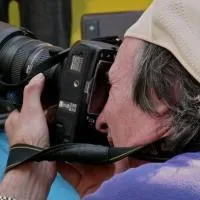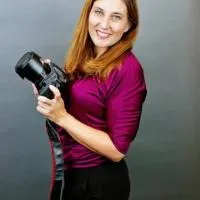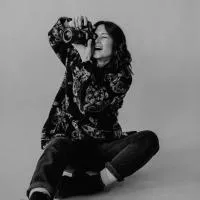Contents
This process is highly important and should come before any design/aesthetic considerations, before you choose a WordPress theme, before SEO. Don’t let your site theme/template dictate how you structure your website. You need to decide that first, and then customize the site to meet your needs.
And most importantly, IA comes before building your site’s navigation. The navigation menu is just an interface element that allows users to reach specific places on your site.
Information architecture (IA) is the art and science of organizing and labeling web sites […] to support findability and usability. (Wikipedia)
Thinking about your site’s structure isn’t easy though, especially if you’re just starting out. But I’ll try to give you a few guidelines for how to think about structuring your photography site.
The end goal is to create a sitemap that can later inform you (or your web-designer) on how to design and organize your website so that it finds the right balance between:
- giving users what they’re looking for
- also meeting your own business goals with the site
1. Understand your target audience
Information Architecture (IA) helps give users what they’re looking for, and that requires a good understanding of your users and their needs. I can’t stress this enough.
Especially if you’re just starting out, you need to do a little homework first: define your target audience and elevator pitch.
2. List out all your potential pages
Take a piece of paper and do a content inventory, write down everything you feel should go into your site.
Here’s an exhaustive list for your inspiration:
- About/Bio page
- Contact page
- Portfolio (just a “best-of” or broken down into separate categories)
- Services (if you offer any)
- Assignment, commercial, editorial services
- Packages
- Photo Tours
- Consulting
- Products
- Stock images
- Downloads/Licenses
- Prints
- Other products (books, calendars, posters, greeting cards, signed prints etc.)
- Blog
- Any other personal or professional projects
- Info pages
- Pricing
- Instructions
- Testimonials
- Clients
- FAQ
- Newsletter
3. Prioritize pages & create a sitemap draft
Now it’s time to decide which of them are more important, and to try to create a sitemap.
Pen and paper work well, don’t procrastinate by experimenting with a bunch of software tools :-)
Start by asking yourself some hard questions:
- What do you want people to take away from your site? E.g. “I want visitors to know my unique approach to doing portraits” or “I want it to be clear that I only work in this specific area…”
- Which services/products to you want to focus on in the future? E.g. “My bread-and-butter so far has been X, so I need to make sure that’s prominently featured on the site”
- Do you want to transition from certain jobs to a different niche? E.g. “I want to slowly transition from shooting weddings to child portraits, but I’ll still be doing wedding for a while, so I’ll promote child portraits first and weddings afterward.”
- What do people associate me with? E.g. “Past clients have often mentioned that they love this aspect of my work, so I need to mention that front and center.”
If you have multiple specialties, this is also the time to decide where you keep everything on a single site, or you break things down into separate sites. I wrote this short article a while ago to help you take this decision: To merge or not to merge separate photography websites?
The sitemap will obviously be useful when later building the navigation menu for your new site. Once you reach that point, be sure to check out my in-depth guide on building a great navigation menu.
4. Give users a clear path through your site
After you’ve decided on a site map, it’s also useful to think about how first-time visitors will “flow” through the site.
Let’s explore a perfect example of creating a website flow: www.georgevivanco.com
You’ll notice that users are taken on a “tour” right from the homepage. This sequence of pages (which also follows the order of items in the “Tour” navigation dropdown) takes people through an exploration of the photographers behind the site and their services.
At the end of each tour page, visitors have one single call-to-action: to continue the tour.

Once they reach the end of the tour, visitors are appropriately taken to the Contact page to leave a message.
Notice that there are many other pages in the site (wedding and engagement portfolios, guides and blog posts), but they weren’t included in that initial “tour”, that would have been too much.
When guiding people through your site (with the help of call-to-action buttons at the end of pages), it’s fine to not include every single page in your site. Just try to guide people through your site’s “pillars”, all leading up to the end goal (asking people to contact you, to subscribe to your mailing list, or to purchase something).
Sometimes you won’t be able to create such a clearly-defined tour for first-time visitors, because you might have more things to promote on your homepage. That’s fine. Show them more than one option (though not too many), and let them choose their own “adventure” through your site. But once they chose a path, guide them forward.
5. Step-by-step IA example
You don’t have to make this process more complicated then it needs to be.
Let’s take a fictitious wedding photographer called John Doe-Smith (he has two last names because his second wife forced asked him to take her name, long story…)
After shooting weddings for a few years, he now knows that his target audience is: English-speaking young couples, ages 22-35, medium to high income levels, down to earth, well organized.
He already has an old website, but thinking about rebuilding his online presence and starting fresh. So he starts making a list of every piece of content he’d like to include on the new site, and comes up with this list: A “best-of” portfolio, a short bio, booking form, wedding and engagement galleries, details about pricing, a big FAQ section, private area where past clients can access their photos, a blog area with several categories.
This translates to this first version of the sitemap:

He then tries to prioritize pages and think about organizing the site, by going answering some tough questions:
- What do you want people to take away from your site? “I charge above the average in my area, so I need to showcase my unique style by choosing impeccable photos for the homepage. Also, visitors should quickly know that I also bring an assistant (which sometimes acts as a second-shooter).”
- Which services/products to you want to focus on in the future? “About 80% of my engagement shoot clients have also hired me for their wedding, so I could do a better job of promoting engagements on my site”.
- Do you want to transition from certain jobs to a different niche? “I’ve been hired for a couple of weddings in [area], but the effort wasn’t worth it, so I should mention I only shoot weddings in [city].”
- What do people associate me with? “My black-and-white close-ups always wow people, so I need to include such images in the galleries. Past clients have also been interested in buying multiple wedding albums for relatives, so maybe I can offer bulk-discounts on my Pricing page.”
You can see how many ideas emerge for both the design and content of the site. What follows is thinking a little about paths people can take through his website:
“Engaged couples exploring photography websites will probably land directly on the homepage, or in a blog post (through SEO or advertising). If they see the homepage first, I need to first take them see examples from my recent weddings, then to learn about my services and prices, and then to ask them to get in touch. If they land on a blog post first, I need to make sure that at the end of every article I’m linking back to the homepage to get them into that flow.”
As you can see, building your website is a long process of discovering the “why” behind everything, of understand your audience and giving them the content in a clear and coherent way.
Further reading
If you have a ton of content or are considering merging multiple websites into one, then you’d need to invest more time into this and do it as seriously as possible.
Here are extra online articles to dive deeper into IA:
- Photography business & website planning guides
- The ultimate guide to information architecture
- Information Architecture 101: Techniques and Best Practices
- Efficiently Simplifying Navigation, Part 1: Information Architecture
- Improving Your Information Architecture With Card Sorting: A Beginner’s Guide
- Starting Out Organized: Website Content Planning The Right Way
- The Difference Between Information Architecture (IA) and Navigation
- Getting The Website Information Architecture Right: How to Structure Your Site for Optimal User Experiences
- Information Architecture – Steps to developing an intuitive website IA
Conclusion
OK, so now that you’re armed with a sitemap and ideas on how you want people to flow through your site, how do you use that info?
- hire a web-design expert (and give him your sitemap & notes) if managing your site gets too difficult
- make sure you also update your navigation menu accordingly
- include call-to-action buttons on (appropriate) pages to create that “user flow”
Hope you now have more clarity about this whole topic.
Notice I didn’t even mention SEO in this article so far. That’s because your main focus should be to display your content in a clear way. If visitors have a nice experience browsing your site, and the content quality is good, all else will come (links from other sites, search engine rankings, referrals etc.)
So for now, don’t worry about design or SEO. Just try to use the guidelines in this article to help structure your photography website (especially if you’re just starting to set it up, or rebuilding an outdated one).















